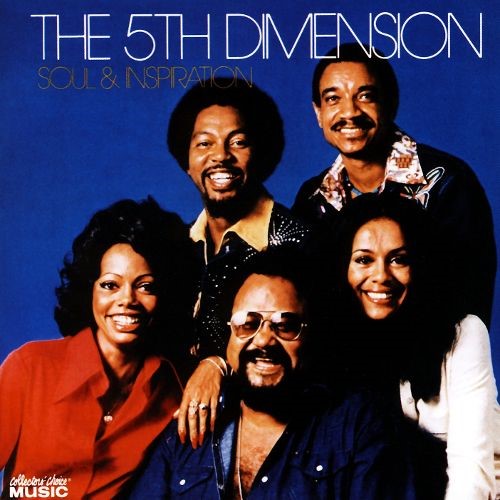
Prompt Images
You may recall that yesterday, we discussed the Laser Interferometer Gravitational-Wave Observatory (LIGO), which in 2015 gave scientists the strongest indication to date that gravity waves exist. But what about other dimensions? (Cue the dramatic music!)
Well LIGO is actually also at the center of a news story involving The 5th Dimension.

Not these guys, though equally revolutionary and technically, they DID found the 5th Dimension first.
Physicists have always been intrigued by the idea of additional dimensions. Why? Think of a physics theory like a video game system. The standard model of particle physics is like a system using the old Nintendo remote: a directional pad plus A and B buttons. That’s great for jumping over deadly turtles and snagging growth hormone-infused mushrooms—but it’s not going to cut it for Halo 57 or Assassin’s Creed: Cretaceous Period or whatever the kids are playing these days. You need more buttons so you can do more sophisticated things. And back in physics land, adding extra dimensions to your theory is like adding additional buttons to your remote: it gives you a more sophisticated theory that can explain more things.
In the halcyon days of theoretical physics, when every patent clerk was capable of making revolutionary discoveries, physicists speculated about a single “fifth” dimension. But then the 1980s came along and physicists were like, “Screw it! Why add a single extra dimension when we could add 22 extra dimensions instead?!”
Of course it didn’t take long for people to realize that 22, while good enough for a Jump Street sequel, was an insane number of extra dimensions. So the string theorists got together and settled on six. Six extra, mind you, bringing the total to 10 dimensions (1 time dimension + the 3 usual spatial dimensions + 6 new spatial dimensions that are balled up into something called a Calabi-Yau manifold).
What do extra dimensions have to do with gravity waves? Well, String Theorists believe that only gravitons, the (yet to be discovered) particle responsible for the gravitational force, travel through those extra six dimensions. This is honestly all above my paygrade, but the upshot is that some physicists have recently published a paper claiming that measurements of gravitational waves may contain information that could be used to determine if those extra dimensions actually exist.
To be clear, the paper isn’t claiming they’ve seen evidence for extra dimensions in any gravitational wave data. (The data they are interested in couldn’t be detected by LIGO anyways and would require measurements taken by future generations of gravitational wave detectors.) It merely indicates that scientists believe you could, in theory, use gravitational wave data to confirm or deny the existence of extra dimensions. It may not be sexy enough sell any copies of The Daily Mail, but for those who value accuracy in scientific discovery, this is still pretty exciting, even with a more nuanced explanation of what it all means.
I’ll put it in context for you.
If you detected evidence for any extra dimensions, well, you still haven’t proven String Theory exists because there are other theories out there that also claim the existence of extra dimensions. (Although you can be damn sure The Daily Mail would be publishing articles with titles like “String Theory Finally Confirmed!”) But proof of any extra dimensions would still be HUGE—like change the future of physics research huge.
And if they found evidence in the gravitational wave data that there are no extra dimensions? That would also be huge because it would suggest that String Theory is just plain wrong and a generation of theoretical physicists would have to reevaluate their entire purpose for existing in the first place.
So, what’s the preliminary response to this paper from the physics community? Are people super excited about the possibility of actually seeing evidence for (or against) extra dimensions?
Not exactly. People appear to be quite skeptical, and reasonably so. Many physicists who know what they are talking about think the method the researchers suggest has a tragic flaw. Unless the researchers can find a way around it, this idea of theirs may be much ado about nothing.
Personally, I hope they can prove the critics wrong, because I cannot overstate how exciting it would be to have extra dimensions discovered in my lifetime. But I put the odds of this method surviving the gauntlet of further scrutiny at 1/100.
Goodbye extra dimensions, hello spacetime status quo.

